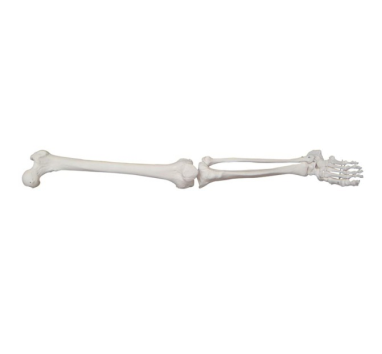26-08-2024
ADA MED SUPPLY LIMITED
Article tag: Lower limb joint model human joint model
The joints on the large lower limb model can indeed move, and this design is designed to more intuitively show the movement mode and mechanism of the lower limb joints. The following is a detailed explanation of joint mobility on the larger lower limb model:
Necessity of joint movement:
In medical education and clinical practice, understanding how the lower limb joints move is crucial. A model of a large lower limb that is capable of movement can help students, doctors, and other medical professionals visually observe the movement of the joint, leading to a deeper understanding of its biomechanical properties and function.

Joint movement is achieved by:
Large lower limb models typically use high-quality materials and precision manufacturing techniques to ensure joint flexibility and durability. These joints are often designed to mimic the movements of real joints, such as flexion, rotation, and lateral flexion.
The moving part of the joint is usually achieved by mechanical structures or springs. These structures allow joints to move freely within a certain range without overstretching or twisting.
Scope and limitation of joint movement:
The range of motion of the joint on the larger lower limb model is usually set according to the physiological characteristics of the real joint. For example, the knee joint usually has a range of flexion between 0° and 135°, while the ankle joint has a range of dorsiflexion and plantar flexion.
In order to simulate the real situation, the range of motion of the joints on the model is also limited. These limitations prevent excessive joint movement, thereby protecting the model itself from damage.
Educational significance of joint movement:
By manipulating the moving joints on the large lower limb model, students can more intuitively understand the way and mechanism of joint movement. This helps them to better understand and master the relevant anatomical knowledge and improve the learning effect.
For doctors and other medical professionals, a large lower limb model with the ability to move can serve as an effective training tool to help them improve their surgical skills and rehabilitation treatment.
In SUMMARY:
The joints on the large lower limb model can move, which makes the model more vivid and intuitive. By manipulating these movable joints, users can have a deeper understanding of the movement mode and mechanism of the lower limb joints, thereby improving the learning effect and clinical treatment effect. At the same time, this design also makes the model more durable and practical, able to meet the needs of long-term use.